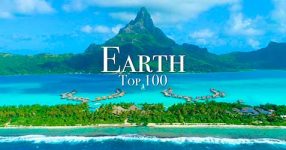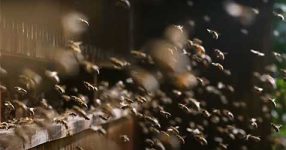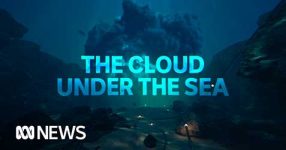The documentary “Dominica: The Nature Island” delves into the symbiotic relationship between the people of Dominica and their natural environment. From the earliest inhabitants, the Kalinago people, to the present-day Dominicans, nature has played a vital role in shaping their way of life. The Carib Chief describes how their nation was built around the sea, making it a primary resource for food, travel, and resistance against invasions. The island’s food, beverage, architecture, and daily life heavily rely on nature, emphasizing the islanders’ commitment to sustained use for survival.
The impact of Hurricane Maria, a Category 5 storm, is highlighted as a pivotal moment in Dominica’s recent history. The documentary captures the resilience of the people in the face of natural disasters, underlining the existential importance of climate resilience for the island’s survival. The commitment to becoming the world’s first climate-resilient nation becomes a driving force, showcasing Dominica’s determination to protect its people and preserve its unique environment.
Exploring Marine Conservation in Dominica
In 2013, the government of Dominica invited the Pristine Seas team from the National Geographic Society to assess the health of the marine environment. The expedition aimed to explore untouched areas, assess marine life, and contribute to conservation efforts. The documentary follows the team’s journey, starting in the Southeast and heading north along the coast toward Cabrits National Park.
Local collaboration is emphasized, with fishermen and community members actively participating in the conservation efforts. The use of technology, including remote camera systems and dive teams, provides valuable insights into the effectiveness of marine protected areas. The Scots Head Marine Reserve becomes a focal point for assessing the success of conservation measures, with a focus on sustainable fishing practices and the economic benefits of ecotourism.
The Rich Underwater World and Sperm Whale Conservation
Dominica’s unique geological features, including sea mounts and diverse marine ecosystems, are explored in the documentary. The team discovers spectacular underwater landscapes and observes marine life recovery within protected areas. The expedition culminates in the exploration of Makuba Bank, a sea mount 20 km off the coast of Dominica, utilizing deep-sea cameras to study the unexplored depths.
A highlight of Dominica’s waters is its resident population of approximately 200 sperm whales. Considered citizens of Dominica, these whales play a crucial role in maintaining the marine ecosystem’s balance. The documentary sheds light on the challenges these whales face, particularly from ship strikes, emphasizing the need for conservation measures and the declaration of Dominica as the first sperm whale sanctuary.
Balancing Conservation and Sustainable Development
The documentary underscores the delicate balance between marine conservation and sustainable development in Dominica. Traditional fishing, a crucial aspect of the island’s culture, is discussed in the context of responsible practices and the need for stability in catch sizes and types. The potential for a thriving blue economy, supported by marine conservation efforts, is highlighted as a key factor in Dominica’s resilience.
The commitment to ocean literacy programs, involving youth in marine conservation, becomes a driving force for the future. The importance of creating awareness and consciousness about environmental impact among the population is emphasized. Dominica’s unique opportunity to showcase its marine life, particularly sperm whales, as a tourist attraction is presented as a way to generate economic revenue while preserving its natural wonders.
“Dominica: The Nature Island” captures the essence of Dominica’s commitment to environmental stewardship, resilience in the face of adversity, and the delicate dance between nature and human development. It serves as both a testament to Dominica’s unique cultural heritage and a call to action for sustainable practices that can be applied globally.












